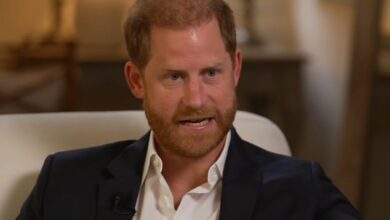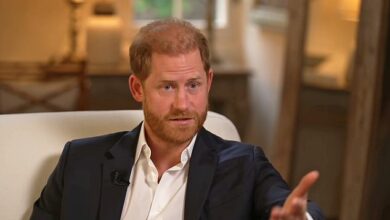William and Harry’s beloved childhood treehouse in Highgrove gets a much-needed makeover
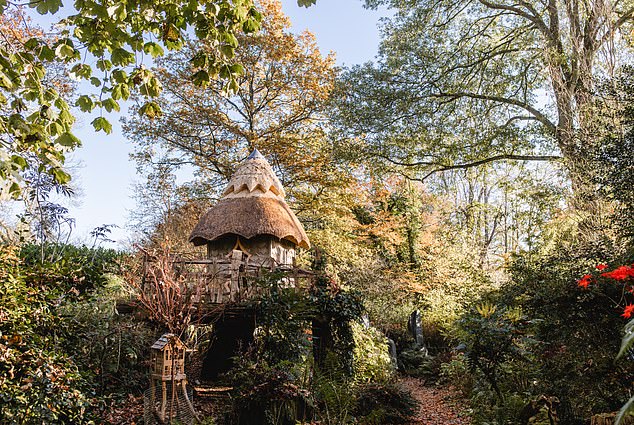
It is a treehouse fit for royalty, built for Princes William and Harry to play in when they were children.
And while the estranged brothers’ relationship might not be so easy to patch up, the roof of their much-loved den in the grounds of Highgrove, King Charles’ private home in Gloucestershire, has just received a badly-needed make-over.
It has been re-thatched by Ben Collyns, 36, appropriately an alumnus of The King’s Foundation Building Craft Programme at Dumfries House in Scotland.
He took a week to refurbish it using traditional skills and described the commission as an absolute ‘honour’.
The unique royal hideaway was built in 1988 for Prince Charles and Princess Diana’s young sons, nestled in the secluded fern-filled Stumpery at Highgrove.
William would have been aged six at the time and Harry aged four.
Highgrove was the principal country home of the then Prince and Princess of Wales.
Purchased by the now King Charles in 1980, the formerly run-down gardens have been a labour of love for him over more than four decades and are considered some of the finest of their kind in the country.

The roof of their much-loved den in the grounds of Highgrove, King Charles ’ private home in Gloucestershire, has just received a badly-needed make-over
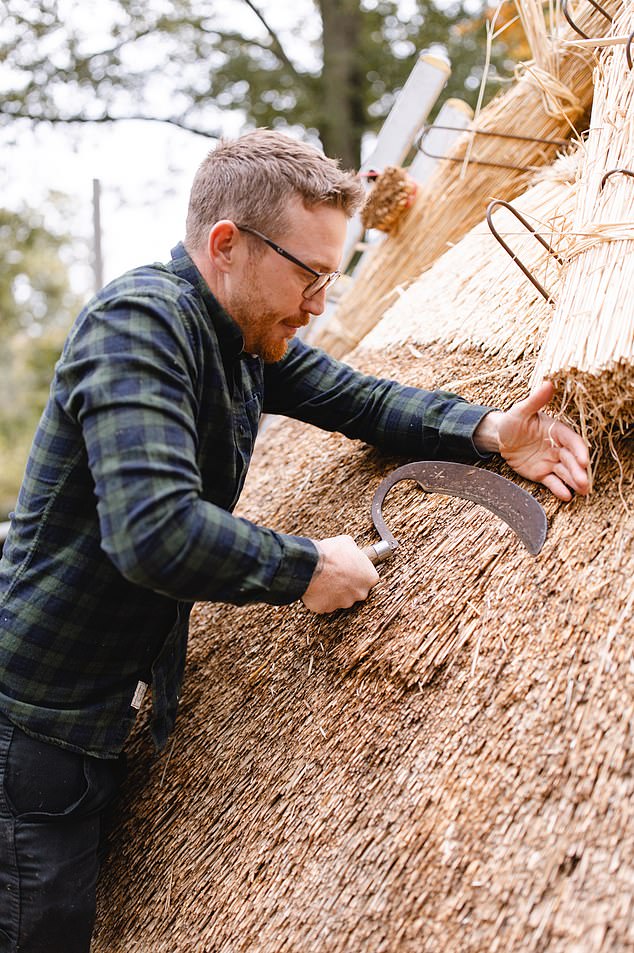
It has been re-thatched by Ben Collyns, 36, (pictured) appropriately an alumnus of The King’s Foundation Building Craft Programme at Dumfries House in Scotland
The treehouse was originally designed by William Bertram and constructed as part of a holly tree.
Indeed, its shape and design takes inspiration directly from the holly tree on which it sits, with a sweet holly leaf-shaped front door.
It was even christened ‘Hollyrood House’ – a play on the name of the Royal Family’s official residence in Edinburgh, the Palace of Holyroodhouse.
A play tea set still sits inside the treehouse as a reminder of happier times.
Bertram later recalled how he interviewed the little Princes when they were aged three and five, to ask them how they would like their new hideout to be.
William told him: ‘I want it to be as high as possible so I can get away from everyone and I want a rope ladder which I can pull up so no one can get at me.’
King Charles refurbished the treehouse for his eldest grandson Prince George in 2015 and while they are not regular visitors to the estate he and Princess Charlotte are known to have played in it.
To reinforce the construction in later years, it now stands on North Welsh slate and Carmarthenshire stone, a platform designed by His Majesty The King and Stephen Florence.
The treehouse itself is built from oak taken from wind-blown trees on the Highgrove estate, with an oak cleft fence and cedar shingles.
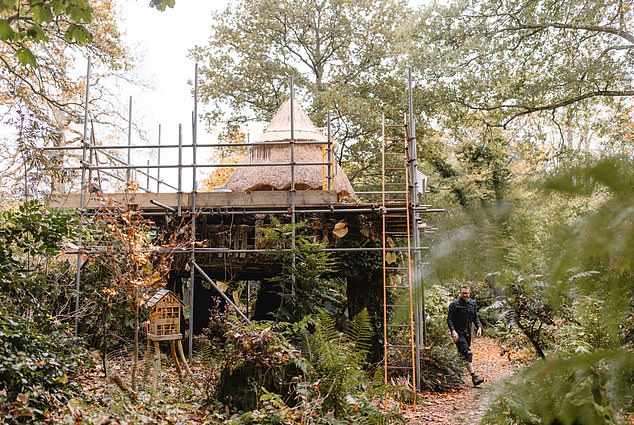
It is a treehouse fit for royalty, built for Princes William and Harry (pictured as boys in 1999) to play in when they were children
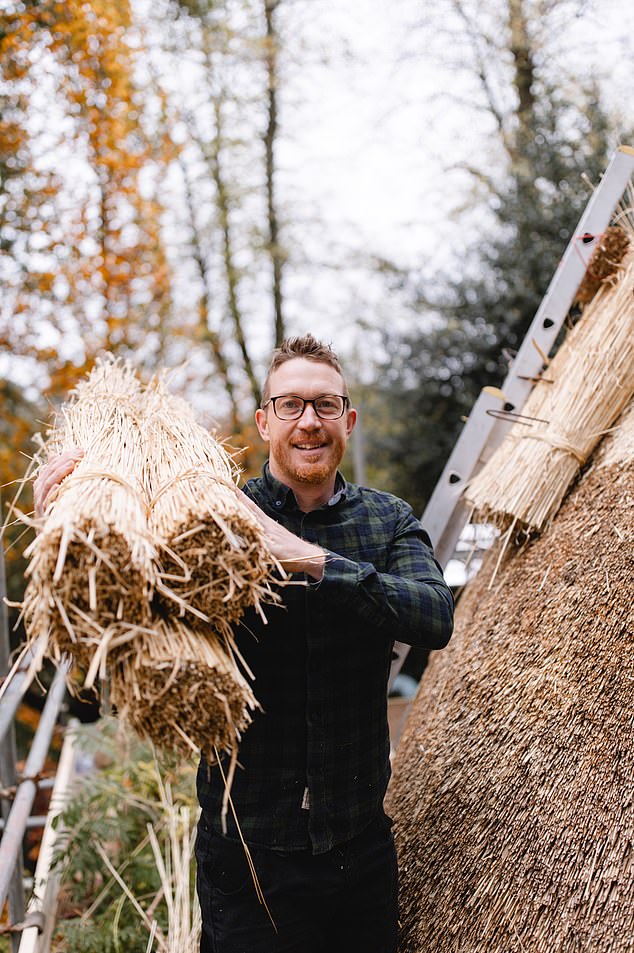
Ben (pictured) took a week to refurbish it using traditional skills and described the commission as an absolute ‘honour’
It can be seen on public garden tours at Highgrove, which run from April to October every year, and raise funds for the King’s Foundation charity.
The Foundation was set up by His Majesty in 1990 and became custodians of Highgrove Gardens in 2021.
It now manages the public opening of the gardens as well as teaching traditional skills at education workshops on site at Highgrove.
Ben Collyns took part in The King’s Foundation’s Building Craft programme at its main site, Dumfries House, in 2011-2012.
He now runs his own business from mid-Dorset, Ben Collyns Thatching, having been taught the traditional skill as part of his practical studies with The King’s Foundation.
His is a dying art, with few true craftsmen working today and many of them often booked years in advance.
For the treehouse at Highgrove Ben used combed wheat reed for the thatch and Hazel spars to fix the reeds in place.
‘It was an honour to have taken part in The King’s Foundation’s education programme in 2011-12 and an even greater honour to be invited back to work on the treehouse at Highgrove Gardens,’ he said.
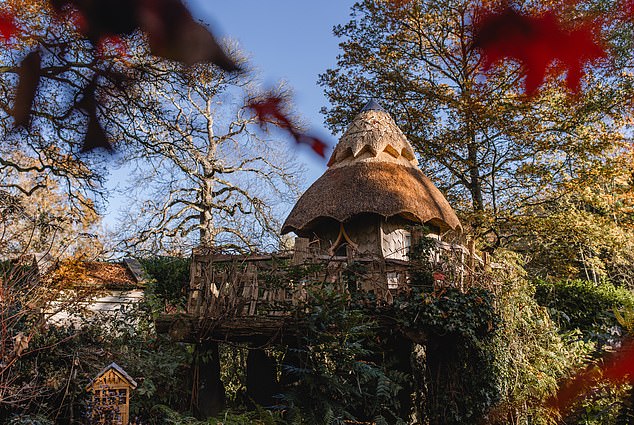
‘It was an honour to have taken part in The King’s Foundation’s education programme in 2011-12 and an even greater honour to be invited back to work on the treehouse at Highgrove Gardens,’ Ben said

The King still stays at Highgrove regularly, even though official duties take him away more often than he likes
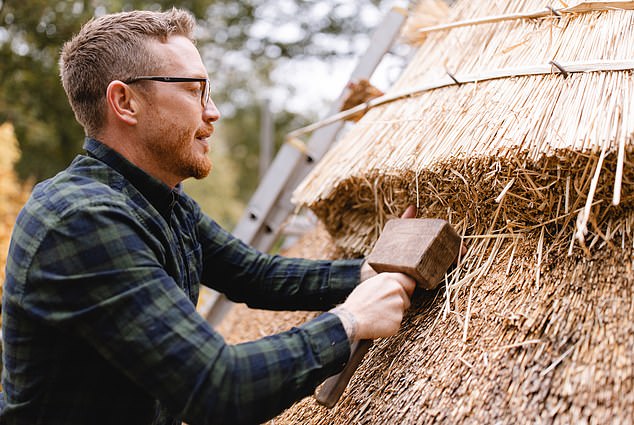
For the treehouse at Highgrove Ben used combed wheat reed for the thatch and Hazel spars to fix the reeds in place
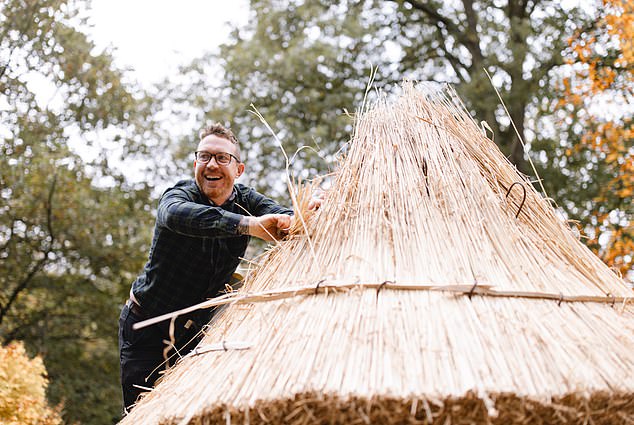
Purchased by the now King Charles in 1980, the formerly run-down gardens have been a labour of love for him over more than four decades and are considered some of the finest of their kind in the country
Studying with The King’s Foundation helped establish my business and instilled a real sense of pride in my journey as a craftsman. Through the placements I worked on, I was not only able to learn new techniques but also build a network of friends and contacts that I’m still in touch with today.
‘It is so important we continue to practice traditional skills to protect them for the next generation and I’m thrilled to be part of that movement alongside The King’s Foundation.’
Constantine Innemée, Highgrove Director for The King’s Foundation, added: ‘We are delighted to be able to employ one of our own alumni to replace the treehouse thatch in Highgrove Gardens – a real full circle moment for Ben.
‘The treehouse is a highlight of the garden tours, which generate income to fund our King’s Foundation education programmes in traditional skills such as thatching, so it’s fantastic to have such an impressive testament to Ben’s skill and the importance of preserving historic crafts on show in His Majesty’s garden for all to see.’
The Building Craft Programme is a full time, 8-month course which gives practical experience in traditional building skills and the opportunity to work towards a Level 3 NVQ in Heritage Skills.
The programme supports those working in the construction sector to elevate their skills by learning traditional and heritage building skills.
As many workers in the sector reach retirement age, it is vital these skills are passed on to the next generation of master craftspeople so the nation can continue to restore and conserve our historic built environment, the charity says.
The King’s Foundation was first formed in 1990 and is inspired by the ‘vision and values’ of His Majesty, building and supports communities where ‘people, places and the planet can coexist in harmony’.

The unique royal hideaway was built in 1988 for Prince Charles and Princess Diana ’s young sons (pictured in 2002), nestled in the secluded fern-filled Stumpery at Highgrove.
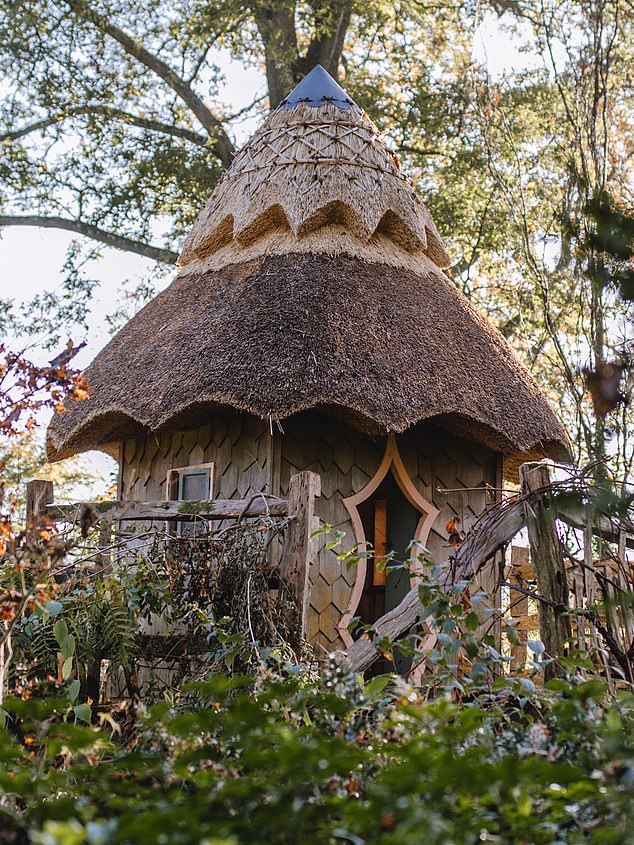
Ben Collyns took part in The King’s Foundation’s Building Craft programme at its main site, Dumfries House, in 2011-2012
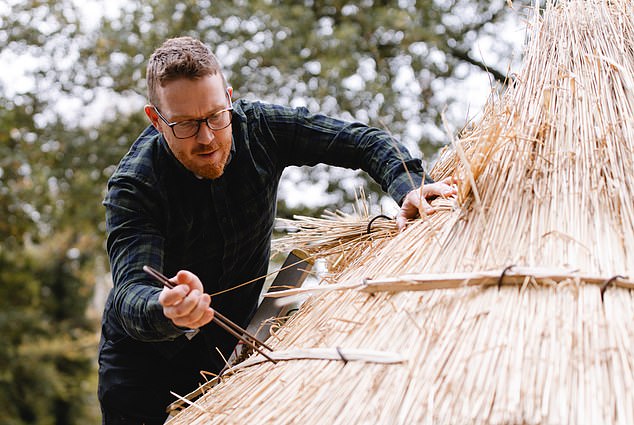
For the treehouse at Highgrove Ben used combed wheat reed for the thatch and Hazel spars to fix the reeds in place
It offers education courses for almost 15,000 students annually, health and wellbeing programmes for nearly 2,000 people every year, and spearheads placemaking and regeneration projects in the UK and overseas to revitalise communities and historic buildings.
The King still stays at Highgrove regularly, even though official duties take him away more often than he likes.
Indeed staff say when he is in residence he can be seen striding out each morning to collect eggs from his ex-battery – now free-range, organic – hens, or pottering around in the gardens building fences or picking slugs from the Hostas.
They will often come in to see a host of hand-written messages with notes of other jobs that need doing or ideas he has to further improve the estate.
No doubt on his next visit His Majesty will be delighted to see his children’s treehouse is fit and ready for another generation of royal youngsters, including his grandchildren, to play in.

